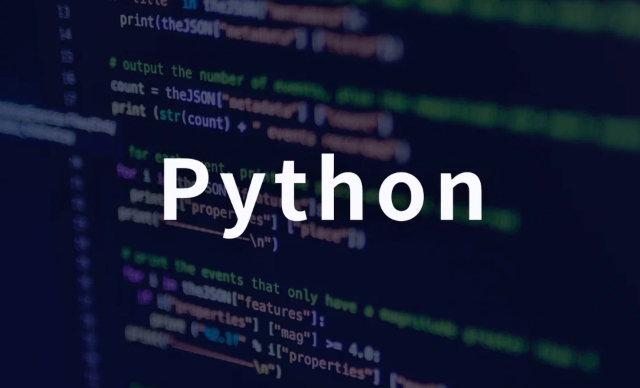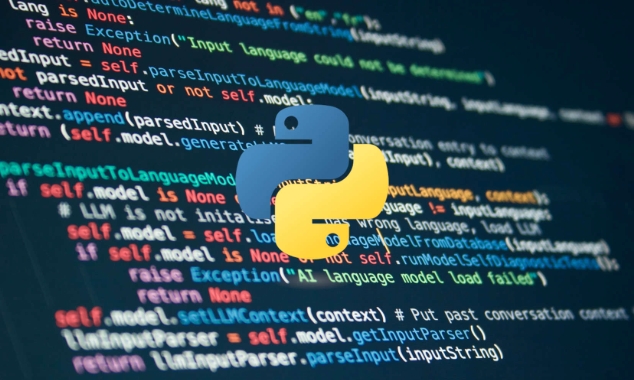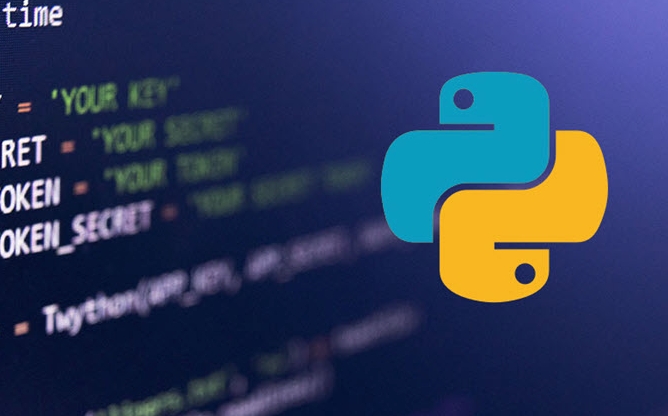Get the last iteration of a for loop in Python
In Python, determine whether the for loop is the last iteration. 1. You can use the index and len() to determine whether the current index is equal to the last index; 2. You can combine enumerate() and len() to improve the simplicity of the code; 3. If you only need to obtain the last value, you can continuously assign values in the loop to retain the final result; 4. For complex scenarios such as generators, you can use the itertools module to implement tags. The four methods are applicable to different data structures and requirements respectively, and should be flexibly applied according to the specific situation when selecting.

In Python, if you want to know when a for loop is the last iteration, there is actually no direct "built-in" way to tell you whether this is the last element. But it can be judged indirectly through some methods. The following are several common practices that are suitable for different scenarios.

1. Use index and len() to determine whether it is the last loop
If you are traversing a list or any object that supports index and length calculation, you can use range(len(...)) to get the current index and determine whether it is equal to the last index.
items = ['a', 'b', 'c', 'd']
for i in range(len(items)):
if i == len(items) - 1:
print("This is the last element:", items[i])
else:
print("Current element:", items[i]) Applicable scenarios:
It is more convenient to know clearly whether it is the last element.

2. Use enumerate() len() to write concisely
This method is similar to the above, but is a bit more concise, suitable for situations where the code wants to look clean:
items = ['a', 'b', 'c', 'd']
last_index = len(items) - 1
for index, item in enumerate(items):
if index == last_index:
print("The last one is:", item)
else:
print("Currently:", item) advantage:
The code is clearer and the logic is easy to understand.

3. Save the last value in the loop (reverse thinking)
If you don't really need to know "is the last one" in advance, but just need to get the last value after the loop is over, you can directly retain the variable:
last_item = None
for item in ['a', 'b', 'c', 'd']:
last_item = item
print("The value of the last loop is:", last_item) Applicable scenarios:
You only care about the final last value, not the intermediate process.
4. Advanced processing using itertools (advanced usage)
For more complex iterable objects (such as generators), you can use itertools.tee and zip_longest to mark the last element:
from itertools import tee, zip_longest
def with_last_flag(iterable):
a, b = tee(iterable)
next(b, None)
return zip_longest(a, b)
for current, next_val in with_last_flag(['a', 'b', 'c', 'd']):
if next_val is None:
print("The last element is:", current)
else:
print("The current element is:", current) Applicable scenarios:
It is more advantageous when facing an infinite generator or a data stream of length cannot be retrieved in advance.
These methods have their own advantages and disadvantages. Which one is chosen depends on your data structure and specific needs. For structures like ordinary lists that can predict length, using indexes is the easiest and most direct way. If it is a generator or an iterator of uncertain length, tools like itertools may be needed.
Basically these methods are just the ones, not complicated, but sometimes it is easy to ignore details, such as boundary conditions or empty list situations. Remember to add a judgment to avoid errors.
The above is the detailed content of Get the last iteration of a for loop in Python. For more information, please follow other related articles on the PHP Chinese website!

Hot AI Tools

Undress AI Tool
Undress images for free

Undresser.AI Undress
AI-powered app for creating realistic nude photos

AI Clothes Remover
Online AI tool for removing clothes from photos.

Clothoff.io
AI clothes remover

Video Face Swap
Swap faces in any video effortlessly with our completely free AI face swap tool!

Hot Article

Hot Tools

Notepad++7.3.1
Easy-to-use and free code editor

SublimeText3 Chinese version
Chinese version, very easy to use

Zend Studio 13.0.1
Powerful PHP integrated development environment

Dreamweaver CS6
Visual web development tools

SublimeText3 Mac version
God-level code editing software (SublimeText3)

Hot Topics
 Improving Readability with Comments
Jul 18, 2025 am 04:46 AM
Improving Readability with Comments
Jul 18, 2025 am 04:46 AM
The key to writing good comments is to explain "why" rather than just "what was done" to improve the readability of the code. 1. Comments should explain logical reasons, such as considerations behind value selection or processing; 2. Use paragraph annotations for complex logic to summarize the overall idea of functions or algorithms; 3. Regularly maintain comments to ensure consistency with the code, avoid misleading, and delete outdated content if necessary; 4. Synchronously check comments when reviewing the code, and record public logic through documents to reduce the burden of code comments.
 Tips for Writing PHP Comments
Jul 18, 2025 am 04:51 AM
Tips for Writing PHP Comments
Jul 18, 2025 am 04:51 AM
The key to writing PHP comments is to clarify the purpose and specifications. Comments should explain "why" rather than "what was done", avoiding redundancy or too simplicity. 1. Use a unified format, such as docblock (/*/) for class and method descriptions to improve readability and tool compatibility; 2. Emphasize the reasons behind the logic, such as why JS jumps need to be output manually; 3. Add an overview description before complex code, describe the process in steps, and help understand the overall idea; 4. Use TODO and FIXME rationally to mark to-do items and problems to facilitate subsequent tracking and collaboration. Good annotations can reduce communication costs and improve code maintenance efficiency.
 Writing Effective PHP Comments
Jul 18, 2025 am 04:44 AM
Writing Effective PHP Comments
Jul 18, 2025 am 04:44 AM
Comments cannot be careless because they want to explain the reasons for the existence of the code rather than the functions, such as compatibility with old interfaces or third-party restrictions, otherwise people who read the code can only rely on guessing. The areas that must be commented include complex conditional judgments, special error handling logic, and temporary bypass restrictions. A more practical way to write comments is to select single-line comments or block comments based on the scene. Use document block comments to explain parameters and return values at the beginning of functions, classes, and files, and keep comments updated. For complex logic, you can add a line to the previous one to summarize the overall intention. At the same time, do not use comments to seal code, but use version control tools.
 Effective PHP Commenting
Jul 18, 2025 am 04:33 AM
Effective PHP Commenting
Jul 18, 2025 am 04:33 AM
The key to writing PHP comments is clear, useful and concise. 1. Comments should explain the intention behind the code rather than just describing the code itself, such as explaining the logical purpose of complex conditional judgments; 2. Add comments to key scenarios such as magic values, old code compatibility, API interfaces, etc. to improve readability; 3. Avoid duplicate code content, keep it concise and specific, and use standard formats such as PHPDoc; 4. Comments should be updated synchronously with the code to ensure accuracy. Good comments should be thought from the perspective of others, reduce the cost of understanding, and become a code understanding navigation device.
 PHP Development Environment Setup
Jul 18, 2025 am 04:55 AM
PHP Development Environment Setup
Jul 18, 2025 am 04:55 AM
The first step is to select the integrated environment package XAMPP or MAMP to build a local server; the second step is to select the appropriate PHP version according to the project needs and configure multiple version switching; the third step is to select VSCode or PhpStorm as the editor and debug with Xdebug; in addition, you need to install Composer, PHP_CodeSniffer, PHPUnit and other tools to assist in development.
 PHP Commenting Syntax
Jul 18, 2025 am 04:56 AM
PHP Commenting Syntax
Jul 18, 2025 am 04:56 AM
There are three common ways to use PHP comments: single-line comments are suitable for briefly explaining code logic, such as // or # for the explanation of the current line; multi-line comments /*...*/ are suitable for detailed description of the functions or classes; document comments DocBlock start with /** to provide prompt information for the IDE. When using it, you should avoid nonsense, keep updating synchronously, and do not use comments to block codes for a long time.
 PHP Comparison Operators
Jul 18, 2025 am 04:57 AM
PHP Comparison Operators
Jul 18, 2025 am 04:57 AM
PHP comparison operators need to pay attention to type conversion issues. 1. Use == to compare values only, and type conversion will be performed, such as 1=="1" is true; 2. Use === to require the same value as the type, such as 1==="1" is false; 3. Size comparison can be used on values and strings, such as "apple"
 PHP Comments for Teams
Jul 18, 2025 am 04:28 AM
PHP Comments for Teams
Jul 18, 2025 am 04:28 AM
The key to writing PHP comments is to explain "why" rather than "what to do", unify the team's annotation style, avoid duplicate code comments, and use TODO and FIXME tags reasonably. 1. Comments should focus on explaining the logical reasons behind the code, such as performance optimization, algorithm selection, etc.; 2. The team needs to unify the annotation specifications, such as //, single-line comments, function classes use docblock format, and include @author, @since and other tags; 3. Avoid meaningless annotations that only retell the content of the code, and should supplement the business meaning; 4. Use TODO and FIXME to mark to do things, and can cooperate with tool tracking to ensure that the annotations and code are updated synchronously and improve project maintenance.







